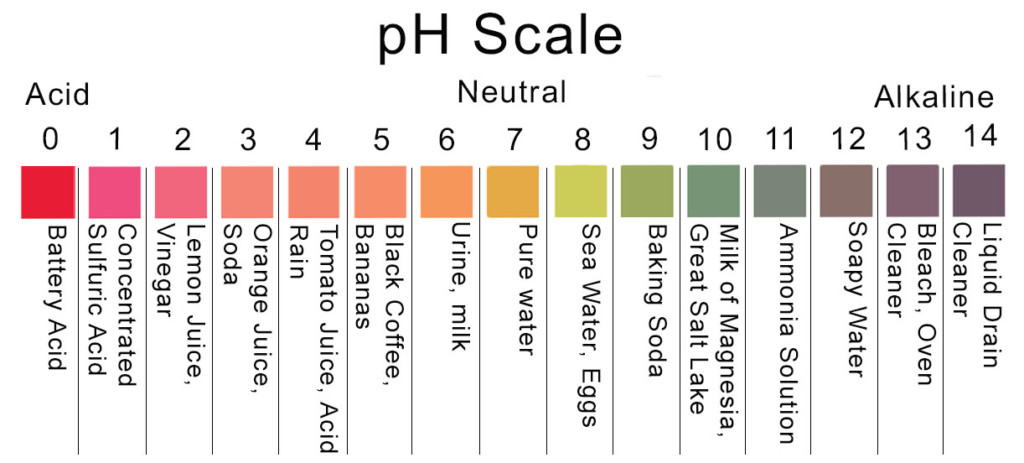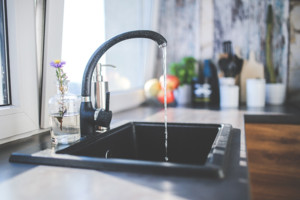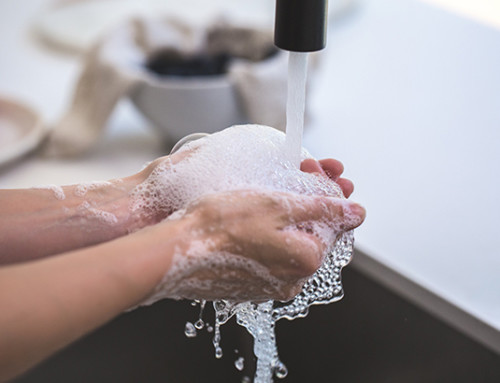When you look at any example of the pH scale, you see that water has a neutral pH of 7. You’ll also see example of acidic substances, like lemon juice, orange juice, and tomato juice, and alkaline substances, like soapy water, ammonia, and baking soda. Acidic substances tend to have a sour taste. That makes sense, right? Lemons are sour. We know that. Basic, or alkaline, substances tend to have a bitter taste. This is a little bit more difficult to qualify considering we don’t drink ammonia or soapy water, and we definitely should not. So, let’s just assume they are bitter.
We’ve made an example of a pH scale below using our pH 1-14 test strip color chart, and we have included examples of various substances across the pH scale.

So, we wanted to as the question, can water of a neutral pH have a taste? Sometimes, you hear people say they like the taste of one brand of bottled water over another. Or you might hear some people complain that they don’t like the taste of tap water. If pure water is supposed to be tasteless, why do different sources taste different to some people? Let’s take a look.
Neutral Substances
First, let’s start by looking at neutral substances. We always see pure water as a common example on the pH scale at a neutral pH of 7. But, are there other examples? Yes! Sugar and table salt also have a neutral pH. That immediately tells us something: a substance having a neutral pH is not necessarily tasteless. We can obviously taste a difference between sugar, table salt and water.
Sugar and table salt aren’t liquids, but you could still add them to pure water and it would change the taste.
But still, water doesn’t really have a taste, right? So how can it taste different?
Water Sources
Drinking water’s original source, treatment and delivery are all factors in the taste and smell of your water. For example, water hardness levels vary significantly across the country. People getting water form a source on the high end of the hardness scale will likely experience a different taste than those getting water from a source on the low end of the scale.
Are you located in the middle of a city, or are you out in the country near a natural water source like a spring, lake or pond? Do you live in the desert, like we do in Arizona, or do you live in Minnesota, Land of 10,000 Lakes? How does your city’s water treatment plant reduce contaminants in the water supply? What methods and treatments are they using? What types of pipes is the water delivered through? What type of plumbing do you have in your home? All these factors play into the taste of water.
 Water contains minerals, such as calcium, iron, sodium and magnesium. High levels of these minerals could give water a different taste. Higher levels of calcium can actually produce a sweet taste in water. Reversely, high levels of sodium could obviously give it a salty taste.
Water contains minerals, such as calcium, iron, sodium and magnesium. High levels of these minerals could give water a different taste. Higher levels of calcium can actually produce a sweet taste in water. Reversely, high levels of sodium could obviously give it a salty taste.
Buildings with old pipes could be rusty or result in excess trace minerals in your water. Thus, you might experience a metallic taste, or even a salty taste, from your tap water. In most instances, it’s unlikely your water is toxic, but you can always have it tested if you are concerned.
Lastly, since water has a neutral pH, it will pick up on any taste you previously had in your mouth. For example, if you eat something sour, your saliva produces chemicals that trigger a sweet-tasting sensation. If you then take a drink of water, it may taste slightly sweet. Your body can even confuse the senses of taste and smell, associating a taste with something you’re actually smelling.
So, while the purest form of water probably doesn’t really have much of a taste, there are many factors that change that, even if just slightly, along the delivery path to you, right down to your body’s perception when it hits your mouth.
If water has a taste, is it cause for concern? Probably not. But, you can always get your water tested by locating a local water testing facility. This can be done through the EPA’s website, or even by calling your nearest water treatment facility and asking them. At-home tests are also available from many of the major hardware stores or online.







Leave A Comment